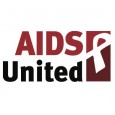What can we do? There is no question asked here at AIDS United more over the past 2 months than that one. What can we do? The question is not a new one. It is the same question that has always driven HIV advocacy because advocacy is not passive pursuit. Advocacy requires action, and from the struggles and sorrows of the earliest days of the epidemic through the formation and implementation of the Affordable Care Act, people living with HIV and their allies have insisted that their voices be heard and that their needs be addressed and met.
All of us who work with or are a part of HIV advocacy groups knew from the start of the 2016 presidential campaign that the next administration and Congress would present a new set of challenges that we would have to rise up and meet. Very few of us thought those challenges would be as arduous, daunting, and deadly as the ones facing us now. We largely prepared for dialogue with a familiar face, who knew our faces in return and whose policies, while not always in lockstep with ours, usually shared a common goal and vision. What we got was Donald Trump.
Hopefully the initial shock of Trump’s victory and the Republican Party’s continued control of Congress has worn off. If it hasn’t, then you need to find a way to put it behind you because the trauma and depression triggered by this election will be nothing compared to the sickness and suffering that will result if efforts to repeal the Affordable Care Act without a substantive replacement, block grant Medicaid, and privatize Medicare are successful.
Despite the uncertainty before us, we know that if we effectively form coalitions and collaborative efforts with other health care and social justice groups and movements, we can preserve quality, affordable health care for people living with HIV in America. Most Americans don’t want to see the ACA fully repealed and overwhelming majorities support individual portions of the law, with more than 80% of Americans supporting ACA provisions that provide financial aid to low and moderate income families so they can buy insurance and the provision that expanded Medicaid in many states. Nearly 70% of Americans also say that they believe insurance companies should be barred from discriminating against people for pre-existing conditions.
The White House and Congress are fighting for policy changes that are at odds with the will and the general health of the American people. Congressional Republicans are going forward with their plan to repeal the ACA and, with no credible replacement proposal. At the same time, President elect Trump is sending mixed message with his statements and cabinet appointments. On the one hand, Trump has said that he wants to provide “insurance for everybody” and has claimed that he won’t cut Medicare or Medicaid. On the other, Trump nominated Rep. Tom Price (R-GA) to lead the Department of Health and Human Services. Price, a former orthopedic surgeon and chair of the house budget committee, proposed ACA replacement legislation in the previous Congress that would increase the ranks of the uninsured by 18 million within a year and put forth legislation that would cut $449 billion from Medicare and $1 trillion from Medicaid. How do we advocate amidst such uncertainty, when domestic programs like the Ryan White HIV/AIDS Program are no longer safe because no health care program seems safe?
For starters, HIV advocacy during the Trump administration must be based firmly on the imperative of keeping all levels of government (federal, state, and local) on course for ending the HIV epidemic. The HIV community must be prepared to strongly oppose any proposal that would result in steering the country off our course of ending the HIV epidemic. If we are to do this successfully, we need to expand our approach towards positively impacting health care reform. This means increasing the capacity to provide policy analysis on a broader range of issues like alternative health reform options, plans for restructuring Medicaid though block-granting or per capita caps, and turning Medicare into a voucher program. It also means increasing our policy and advocacy capacity at the state level.
On the communications front, we need to acknowledge the increased importance of strategic messaging in our work, using all potential outlets to disseminate our message and reach new audiences who might want to get involved in HIV advocacy work, but just don’t know how. We need to cultivate an increased focus on voter education and engagement, including an emphasis on expanding voting rights and reducing voter suppression. Elections have consequences, as the 2016 elections very likely will show, and in this age of rising voter suppression all across the country we need to work harder than ever to inform voters about HIV policy issues and the obstacles they may face when going to the polls.
It is worth reminding ourselves that HIV programs in America were developed in a landscape of governmental neglect and wide-scale societal fear, stigma, and discrimination. We’ve been here before and we know how to survive and thrive. We cannot and will not be deterred from ending the HIV epidemic and ensuring that the vision of National HIV/AIDS Strategy is fully realized. We will support executive and congressional efforts to advance this vision and strongly oppose any deviation from our national goals. That’s the message of HIV advocacy in the Trump administration.








1 Comment
1 Comment